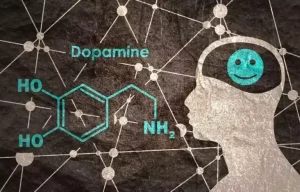
So, by not asking it we’re leaving the kids to figure it out on their own. And they’re figuring it out through social media and through a lot of misinformation. ††† For SUDORS, a potential bystander is defined as a person aged ≥11 years who was physically nearby either during or shortly preceding a drug overdose and potentially had an opportunity to intervene https://ecosoberhouse.com/article/vicodin-addiction-symptoms-treatment-and-recovery/ or respond to the overdose. Persons in different self-contained parts of larger buildings (e.g., a different apartment in the same apartment building) would not be considered potential bystanders.

What experiences among adolescents may negatively impact their mental health and well-being?
To meet the criteria for an alcohol use disorder, you might be stealing from a store, you might get DUIs, you might have a disrupted marriage because your alcohol use got out of control. This fact sheet offers young adults information on living with anxiety disorders. This fact sheet, written specifically for preteens and teens, compares the myths with the facts about alcohol use and its effects. It’s important to understand why teens use or misuse drugs, so the right resources and education can help them, Dr. Nora Volkow, director of the National Institute on Drug Abuse, wrote in an email. The same percentage cited drug use as a way to «stop worrying about a problem or forget bad memories.» And 40% said they used to cope with depression or anxiety.
Links to NCBI Databases
- The completed survey from 2022 is nationally representative and represents about 75% of the sample size of a typical year’s data collection.
- At the state and local level, initiatives to improve access to youth mental health care include promoting school-based Medicaid behavioral health services and connecting youth to virtual care at no cost.
- Reported use for almost all substances decreased dramatically from 2020 to 2021 after the onset of the COVID-19 pandemic and related changes like school closures and social distancing.
Data from NSDUH found that in 2022, 19.5% of adolescents (or 4.8 million) had a past year major depressive episode. Major depressive episode refers to a period of at least two weeks when an individual experienced a depressed mood or loss of interest or pleasure in daily activities and had a majority of specified depression symptoms. Among these adolescents with a past year major depressive episode, 48% received mental health services in an outpatient setting, which includes general medical and education settings (Figure 6). Thirty-four percent of adolescents with a past year major depressive episode received mental health care via telehealth (care received via phone or video from a therapist or other health care professional) in 2022.
Resources for Middle School Youth (Ages 10–
- Experimenting with drugs or alcohol is tempting for teenagers because they may not know or understand the dangers of using substances—even just once.
- Be clear that the risks of drugs are serious and that drug use will not be tolerated.
- However, the recently released Teen National Health Interview Survey (NHIS-Teen) surveyed adolescents (ages 12-17) directly, which allows for a more direct representation of adolescent mental health.
- Research has improved our understanding of factors that help buffer youth from a variety of risky behaviors, including substance use.
Teenagers who abuse substances teen drug abuse are more likely to have mental health issues. Conversely, teenagers with mental health issues are more likely to use substances to cope with their problems. A study showed that 60% of teens in a community-based substance use treatment program were also diagnosed with a mental health disorder. In addition, teens often don’t know or understand the dangers of substance abuse.

In 2008, child protective service agencies received 3.3 million reports of child abuse in the general US population with 772,000 children determined to be victims of maltreatment 9. Children of substance abusing parents have a greater risk of maltreatment, including physical abuse, sexual abuse, and neglect. Although clearly not all parents who abuse substances engage in maltreatment, these families are over-represented in reported and investigated cases of maltreatment. Studies have estimated that between 40% and 80% of substantiated child maltreatment cases involve children of substance abusing parents 76,77.
Youth, fentanyl, and the urgency of honest conversations
It can be difficult to tell the difference between the pangs of adolescence and actual drug use, but parents can be proactive in talking to their teen to find out what’s going on. Teens who abuse drugs may have a greater risk of developing an addiction when they are adults. This video for middle school students describes what Opioids are, why doctors prescribe them, and how they can be… This video for middle school students describes cigarettes, e-cigarettes, vapes, and other tobacco products and provides…

